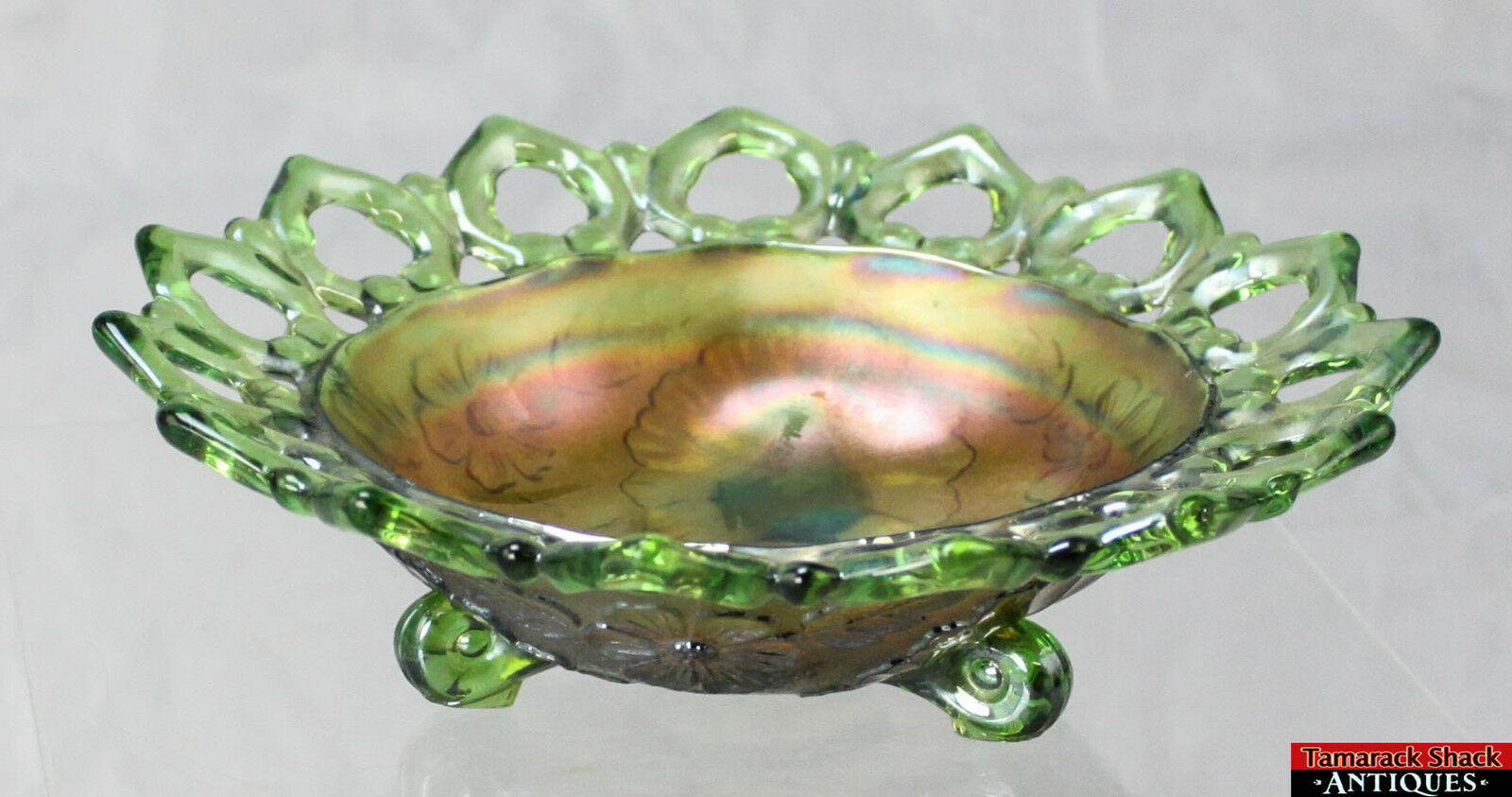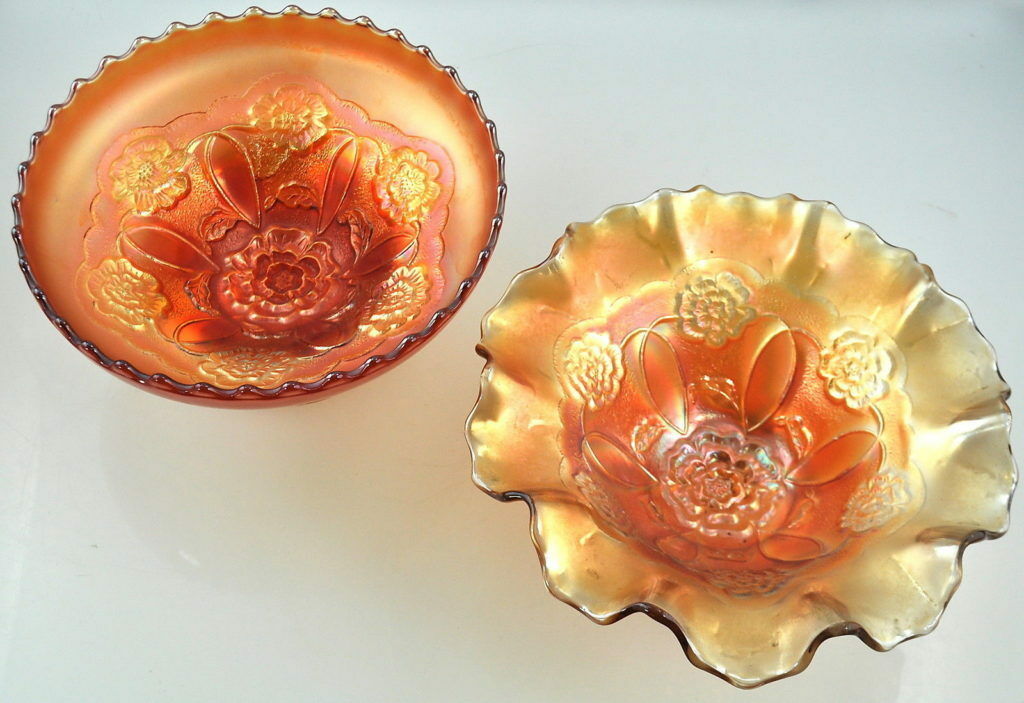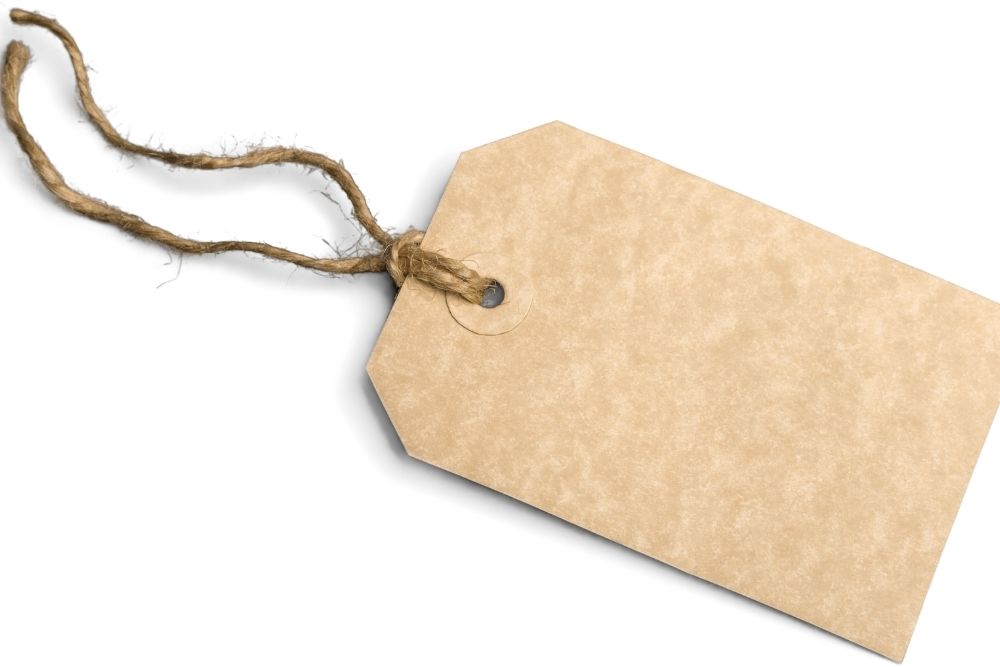
At the dawn of the twentieth century, carnival glass was everywhere. Antique collectors like the wide diversity of colors, forms, and sizes, as well as the wide range of pricing, of carnival glass artifacts.
What Is Carnival Glass?
Carnival Glass comes in an iridescent rainbow of hues because of the mineral or metallic salts that are added throughout the manufacturing process to press glass to form it. Carnival glass got its name because it was a typical prize during carnivals between 1907 and 1925. Carnival glass is a type of crystal. Even though it was called iridescent carnival glass, the majority of it was really sold in retail stores. Carnival glass regained popularity in the 1960s and 1970s and continued to be manufactured, albeit in smaller quantities, into the 2000s.
Other Names for Carnival Glass
The Fenton Art Glass Company trademarked the name Iridill as the original name for carnival glass. This sort of pressed colored glass was also known as carnival glass, among other names. These were some examples:
- Aurora glass
- Cinderella glass
- Dope glass (‘Doping’ is referred to as ‘dope glass’ because of the term given to the manufacturing process.)
- Poor man’s Tiffany glass (People call it “poor man’s Tiffany glass” since it is more affordable than more expensive Tiffany pieces for the common person.)
- Rainbow glass
- Taffeta glass
How to Identify Carnival Glass

Carnival glass can be identified in a number of ways. You may need the assistance of a certified professional appraiser, but you can also search for common features while examining a possible acquisition. The following are the most popular methods of spotting the glass:
- Consider the hue and sheen to see if you can see an iridescent rainbow effect.
- Check the glass’s base, which should be thin and light in weight. On the other hand, it frequently lacks the glass’s iridescent shine.
- Make sure to check the glass for a manufacturer’s mark, but be aware that many businesses did not brand their carnival glass.
- A rusty appearance is more likely to develop in older carnival glass because of deterioration of the metal oxide used in its production over time.
- Analyze the designs and colors using an antique carnival glass reference book, such as Collecting Carnival Glass by Marion Quintin-Baxendale, Warman’s Carnival Glass: Identification and Price Guide by Ellen Schroy, or the Carnival Glass website of antique appraiser David Doty.
Carnival Glass Colors
When held up to the light, carnival glass should have a shimmering appearance. The end result should resemble the iridescent swirls you see when you put oil in water. More than 60 different colors are available for carnival glass’s foundation, but the most popular ones are:
- Marigold (an orange-gold shade)
- Amethyst
- Green
- Blue
- Purple Red
- Red
- Amber
- Peach Opal
- White carnival glass – moonstone (translucent), milk glass (opaque), baking powder glass, Nancy glass, and Pompeian iridescent are all names for the same type of white carnival glass.
If you look at the bottom of an item, you can usually identify what the base color is because there aren’t as many chemicals utilized to make the iridescent rainbow appearance there.
Carnival Glass Patterns

Antique carnival glass was machine-pressed, but the final shape and fashioning of each piece was done by hand. There are over 2,000 different patterns of carnival glass. Thus, no two pieces are the same. The glass’ edges were decorated with a variety of odd crimps, ruffles, rounds, and scallops. It’s also possible to date a piece of carnival glass based on the pattern because different designs and banding patterns were grouped together over time. In addition to its inconsistent sizing and style, vintage carnival glass patterns sometimes include crimped edges on bowls that fluctuate in size because they were handmade.
Carnival Glassware Pieces
Home decor and kitchenware were two of the most common uses for Carnival glass. In this category you’ll find punch bowls and sugar bowls as well as serving plates and canisters for storage. Ashtrays, figurines, and lamps were also made from it, but these were used far less frequently than the other items mentioned.
Carnival Glass Manufacturers
Carnival glass was created by a number of businesses in the United States, including Indiana Glass, Imperial Glass Companies, Northwood, Millersburg, Fenton, Dugan(Diamond) Glass Company, Cambridge, U.S. Glass Company, and Westmoreland. Imperial Glass was one of these companies. Crown Crystal of Australia, Brockwitz and Sowerby, as well as Cristalerias Rigolleau and Cristalerias Piccardo in South America, were some of the most well-known carnival glass manufacturers in Europe. Unfortunately, many carnival glass manufacturers all around the world fail to incorporate a maker’s mark on their wares. There were a handful of companies that went the extra mile, such as Fenton, Imperial, Dugan, and Northwood.
- Carnival glass maker Fenton, which operated until 2007, used an oval mark on their pieces to identify it as being made by the business, but many of their works are completely unmarked. Starting in 1980, Fenton began adding a decade to the mark, with an 8 for the 1980s, a 9 for the 1990s, and a 0 for the 2000s. Fenton was well-known for its carnival glass in a variety of colors, including marigold and scarlet, as well as for its elaborate embellishments like crimped or scalloped edges.
- Northwood’s trademark was an uppercase N enclosed in a circle or semicircle, with the letter “N” underlined. Additionally, they were well-known for their use of natural themes and vibrant colors, such as the well-known marigold and a shade they termed golden iris.
- Imperial Glass was known for its cross-shaped logo, which served as the company’s trademark. Additionally, their work was notable for the use of unique base colors, and their primary design approach was geometric in nature.
- In the shape of a diamond, the manufacturer’s mark of Dugan was an uppercase D. Crimped edges and natural motifs were common in their carnival glass. While Dugan’s carnival glass came in a wide range of hues, the company was most renowned for its dark amethyst and peach opalescent hues.
- The Carnival Heaven website has a list of recognized carnival glass trademarks.
Fake Carnival Glass
If you’re looking for authentic antique carnival glass, be careful that “fakes” have been made to entice unsophisticated antiques purchasers. Real versus fake can be distinguished in a few ways, but there is no surefire method.
- Fake mark – Others include manufacturer’s marks that appear like they were made by a legitimate carnival glass maker using the original carnival glass molds. It would appear that Northwood is the manufacturer of, say, a carnival glass bowl with a “N” etched on the bottom Assume that if the N does not sit within a circle, then it is not real.
- Dull surface – YA dull appearance rather than a sparkling one is another way to spot a fake. You can verify this by comparing it to a genuine piece of carnival glass. Real carnival glass, on the other hand, came in a wide range of colors and sheens.
- Less detail – Fakes sometimes have less ornate and finely detailed artwork, as well as thicker glass than the real thing. If something seems clumsy, it probably isn’t.
- Faked patterns – When collecting certain patterns, be especially watchful because they are frequently faked. Northwood Grape and Cable bowls, Northwood Peacock items, Fenton Stag and Holly pieces, and Fenton Butterfly and Berry pieces are just a few of the most popular designs to see. Consult an expert if you’re unsure, or look through a pattern book of well-known carnival glass patterns instead.
Carnival Glass Versus Depression Glass
As early as the turn of the 20th century, carnival and depression glass were both popular. Because of the time period and the wide range of hues, they are sometimes mistaken for one another.
Carnival glass lacks the shimmering metallic rainbow look that depression glass has, thus it’s easy to tell the two apart. Carnival glass has a multi-colored appearance, whereas depression glass has a uniform color.
Carnival Glass Prices

Antique carnival glass is available for a wide variety of costs, depending on the piece’s age, condition, color, and rarity of the pattern. Even if it’s a more contemporary piece, you can locate carnival glass pieces for under a hundred dollars. There are also extremely uncommon items available for purchase, with some fetching upwards of several thousand dollars.
Identifying Antique Carnival Glass
It’s not always easy to tell if a piece of glass is genuine vintage carnival glass. It’s tough for an amateur collector to keep track of all the many designs and craftsmanship that go into each piece, not to mention the lack of manufacturer’s marks.
Carnival glass collectors who want to get into the hobby may find a pattern guide essential in narrowing down the authenticity of individual pieces. To rule out fakes, it helps to have some background knowledge on the firing and manufacturing processes used in the early part of the 20th century.
